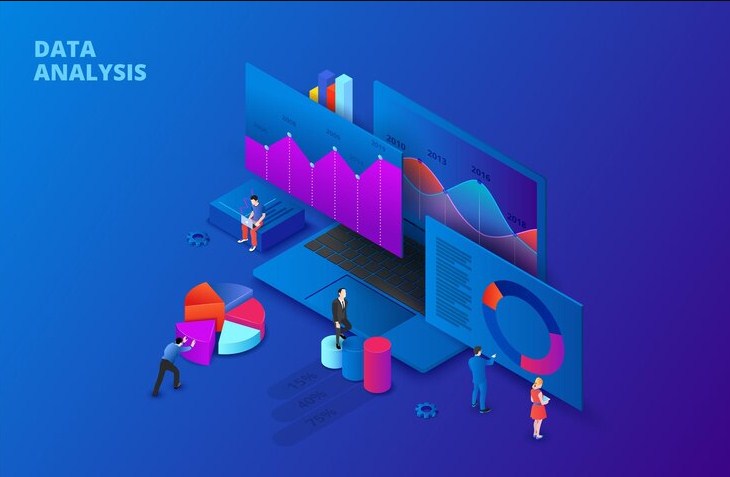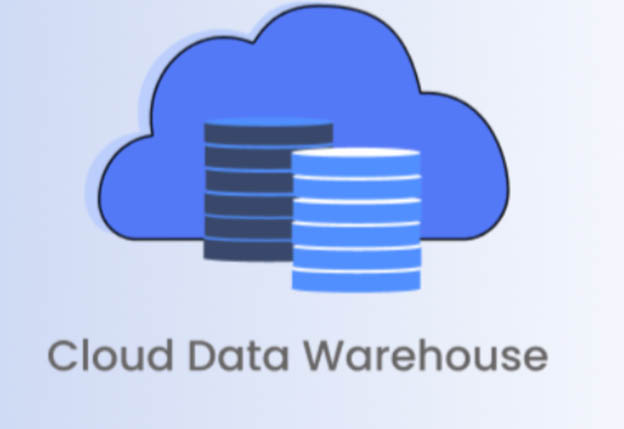Power of AI in Cloud Data Warehouse
Nowadays, businesses need to understand lots of data to make smart choices. Cloud data storage is famous for keeping big amounts of data from different places.
But, understanding all that information can be tough. This is where AI (artificial intelligence) becomes super useful.
In today’s digital era, harnessing the power of AI Consulting services can revolutionize your cloud data warehouse.
AI can change your cloud storage into a strong tool for analyzing data, helping you find valuable insights quickly and easily.
By adding AI to your cloud storage, you can make boring tasks automatic, discover patterns you didn’t see before, and predict what might happen in the future.
From getting data ready to instant improvements, and understanding human language to foreseeing upcoming trends, AI offers many skills that boost your effort in analyzing data.
Unlock the Power of AI in Your Cloud Data Warehouse and revolutionize your data analysis capabilities
1) Faster Data Analysis

In today’s fast business world, getting the hang of what heaps of data mean is crucial. With help from artificial intelligence (AI) and cloud storage for our data, we’re now able to sift through massive amounts of information quickly.
This allows us to spot key patterns, trends, and opportunities to expand.
Instead of waiting around for days or even weeks for people to go through the data bit by bit, AI helps us zoom through millions or billions of bits of information in just a few minutes or hours.
The smart AI algorithms can go through both neat and messy data on their own, finding connections, spotting weird stuff, understanding customer actions, and lots more.
This torrent of insights arrives in easily digestible formats like visualizations, reports, and basic language summaries.
Your team can then take action on the timeliest and relevant information quickly before it becomes outdated or irrelevant.
For example, an AI-driven sales analysis could reveal that a specific product line is unexpectedly surging in a geographic region.
This insight would allow you to rapidly ramp up inventory, marketing, and sales efforts to maximize revenue from this hot trend.
By the time a human analyst delivers those insights manually, the opportunity may have already passed.
The Future of AI in Data Warehousing is incredibly promising, as advancements in machine learning continue to revolutionize how businesses manage and analyze their data.
2) Improved Data Quality
While AI enables hyper-fast analysis, it can also enhance the quality and trustworthiness of your data inputs through automated data preparation.
Inconsistent data plagues analytical efforts, but AI can automatically detect and remediate these issues.
AI capabilities like machine learning and natural language processing can identify errors, outliers, missing values, discrepancies, and other data quality issues across your datasets.
The AI can then programmatically clean up the data by removing or correcting flawed records. It provides data lineage and provenance reporting so you understand exactly what changes were made.
This automated data cleaning and wrangling reduces the manual effort typically required.
It delivers faster time-to-insight while increasing confidence in your data and analysis results. Your team avoids the pitfalls of basing decisions on incomplete, inaccurate, or biased data.
The AI systems can also integrate disparate data sources into a consolidated, conflict-free view ready for analysis.
No more juggling inconsistent data extracts or dealing with silos across systems. The AI cleanses and unifies data into an analytics-ready state automatically.
Businesses that embrace The Future of AI in Data Warehousing will gain a competitive edge by leveraging intelligent algorithms to optimize data storage, retrieval, and analysis processes.
3) Predictive Analytics

Image Source – https://www.sprinkledata.com/
While studying past data is useful for understanding what already occurred, AI enables predictive analytics that forecast future trends and scenarios.
This forward-looking capability is extremely powerful for driving strategic decision-making.
- Using advanced machine learning techniques, AI models can analyze current data warehouse data combined with external data streams. It identifies intricate patterns and relationships to determine key influence factors.
- The AI then runs simulations outlining how those factors may change and impact future outcomes.
- For example, the AI could study your sales data along with economic indicators, consumer demand signals, supply chain data, and more.
- It would then predict how your sales may increase or decrease over the next year based on the potential future environment.
- You can use those accurate forecasts to properly staff, adjust inventory, set revenue goals, and minimize potential disruptions.
- AI predictions are applied to countless scenarios like forecasting customer churn, anticipated maintenance needs, market movements, etc.
The models become smarter over time as they ingest new data. You gain an extremely robust crystal ball for confidently charting your business strategy.
Empower your decision-making process with the advanced analytics facilitated by the Power of AI in your Cloud Data Warehouse.
4) Automatic Optimization
Unlocking the Power of AI in Your Cloud Data Warehouse explores the role of AI in cloud computing.
As data volumes continue growing exponentially, optimizing the performance and efficiency of your data warehouse is an ongoing challenge.
This is where AI provides immense value through automated monitoring and tuning.
AI systems track real-time usage metrics like queries per second, storage consumption, processing times, and bandwidth needs across your cloud data warehouse deployment.
As loads increase from human activity or automated processes, the AI can automatically adjust configurations to maintain top performance.
It allocates more cloud computing resources like virtual servers during peak demand periods, then scales them back down when things are quieter.
Workloads are balanced across nodes, in-memory caching is adjusted, files are reorganized and re-indexed, and other optimizations are applied autonomically by the AI to boost speed.
You avoid the risk of performance bottlenecks or excessive costs from over-provisioning.
Your end users experience consistently fast, reliable data warehouse access. And your data engineering team is freed from tedious, error-prone manual tuning and optimization tasks that AI now handles.
5) Natural Language Processing

With the role of AI in cloud computing, data warehouses can intelligently adapt to changing data patterns and optimize resource utilization.
To get everything out of a data warehouse, folks need an easy way to dig into and study the data.
- With AI that understands regular spoken language (thanks to natural language processing or NLP), anyone can just ask questions like they’re talking to a friend and get quick answers back.
- Rather than learning complex query languages or struggling with rigid data modeling tools, users submit requests using terminology they already know, like “What were our top 5 selling products last quarter?” or “Show me sales by region for sporting goods categories.”
- The NLP engine automatically translates these inquiries into the proper database queries and retrieves visualized results from the data warehouse.
- It cross-references datasets, handles data relationships, and applies filters and calculations as needed.
- The AI reformats and explains the output in easy-to-understand language.
- This democratizes analytics across your organization.
- Subject matter experts in roles like marketing, sales, operations and more can finally access data insights on their own without relying on technical analysts or data scientists. They gain data autonomy while your technical staff is freed for higher-value tasks.
6) Easier Data Management
Managing data pipelines and warehouses is typically complex and labor-intensive, involving lots of manual coding and processes. However, AI automates numerous data management tasks to reduce this overhead.
Through capabilities like intelligent automation and machine learning operations (MLOps), AI handles key data tasks with minimal human intervention required.
This includes data extraction, data type conversions, complex transformations like joins or unions, cataloging, validations, quality checks, data mastering, and loading processes.
For example, data integration workflows can be configured by specifying sources, mappings, and targets through simple visual tools or natural language descriptions.
The AI then executes the entire ETL/ELT process following schedules or triggered events.
Data engineers and analysts gain huge productivity gains while avoiding tedious, error-prone work.
Their skills are better utilized for strategic data architecture and modeling rather than coding.
Leveraging the role of AI in cloud computing, data warehousing consulting can deliver real-time insights, enabling businesses to respond quickly to market trends and customer needs.
7) Enhanced Security

Since data is super valuable today, keeping your data warehouse safe is super important.
Luckily, AI is here with strong cyber-security application development tools to help protect all your important data stuff.
- AI uses techniques like deep learning, machine learning, and behavioral analytics to establish baselines for normal data warehouse access patterns across dimensions like locations, users, devices, and workflows.
- As data is streamed in real-time, the AI detects and flags any anomalous deviations that may indicate threats or breaches.
- Through automated monitoring and analysis, AI can rapidly identify risks like unauthorized data exfiltration attempts, compromised credentials, malicious usage of elevated privileges, injection attacks, data theft or tampering, and more.
- It triggers appropriate containment responses like quarantining users or terminating sessions.
- AI security systems incorporate data classification and governance to control read/write file access permissions based on data sensitivity levels.
- Only authorized users can view or alter classified data assets per defined data lifecycle and privacy policies.
8) Cost Savings
While cloud data warehouses provide scalable and flexible analytics platforms compared to on-premises options, their pay-as-you-go pricing model requires diligent cost management.
This is where AI-powered optimization and automation translate to substantial cost savings.
By continually right-sizing compute and storage resources to match demand, AI minimizes excess spending on underutilized or overprovisioned cloud services.
Analytics workloads are executed most efficiently by prioritizing processes, caching, compressing data, and offloading tasks across hybrid multi-cloud environments.
Furthermore, AI handles numerous data engineering and operations responsibilities that otherwise require expensive headcounts and contractors.
Tedious tasks like data migration, quality checks, performance tuning, security monitoring and more are fully automated without human labor costs.
Finally, AI empowers more affordable self-service data exploration across teams by eliminating reliance on specialized analytics talent.
Non-technical users gain data insights on their own without the coding skills needed. Overall, AI maximizes your return on investment from cloud data capabilities.
9) Scalability on Demand

One of the greatest advantages of cloud data warehouses is their ability to seamlessly scale up or down based on fluctuating needs. AI makes scaling even smarter and more automated.
For example, AI monitors inbound data streams and automatically provisions additional cloud resources when heavy loads are anticipated, such as high-volume IoT sensor data or data dumps from marketing campaigns.
Processing power and storage expand elastically to ingest data in real time without disruption.
Conversely, AI can strategically reduce cloud capacity during known periods of reduced demand.
This allows you to cut costs by spinning down unused servers and reclaiming storage. The de-provisioning occurs seamlessly without impacting performance.
AI optimizes data distribution as your warehouse grows. It automatically rebalances data across physical cluster nodes to alleviate hot spots.
Query workloads are routed intelligently so resource usage remains level amidst varying analytics processes.
10) Integration Across Tools
To conduct comprehensive analytics, users need the flexibility to integrate and enrich cloud data warehouse information with other relevant enterprise data sources and tools. AI creates a unified, analytics fabric across this entire landscape.
You can seamlessly incorporate structured and unstructured data from databases, data lakes, SaaS applications, IoT streams, social media, and more into your cloud data warehouse through AI-driven data ingestion pipelines, virtualization, and connectivity.
The AI handles all data formatting, mapping, merging, and preparation.
Conversely, AI allows your data warehouse to integrate with popular BI, reporting, data science, and operational tools that analysts already use.
Data can flow bidirectionally for read/write access. AI provides translation capabilities so insights can fuel real-time applications and decision processes.
This interconnected integration delivers a truly modern, self-service analytics environment.
It eliminates data silos and context switching across disparate systems. Your teams enjoy a seamless, interoperable experience for uncovering and operationalizing insights from all available data assets.
Do you want to unleash the full power of AI to supercharge your cloud data warehouse analytics? Let’s discuss how to get started!
FAQs
1) What skills are needed to use AI with a cloud data warehouse?
AI and machine learning automate many complex tasks, so minimal technical skills are required. Users interact through visual tools or natural language.
2) How does AI improve data warehouse performance?
AI monitors real-time activity, automatically allocating resources like cloud servers and memory as needed to maintain optimal speeds and efficiency.
3) Can AI make a data warehouse house more secure?
Yes, AI uses techniques like behavioral monitoring to detect and prevent unauthorized data access, breaches, and cyber threats in real-time.
4) How does AI assist with data preparation?
AI automates data integration, cleansing, transformation, and formatting processes to deliver analytics-ready datasets without coding or manual effort.
5) What are some use cases for predictive analytics with AI?
AI predictive models enable forecasting future scenarios like sales projections, maintenance schedules, customer churn, market movements, and more.



